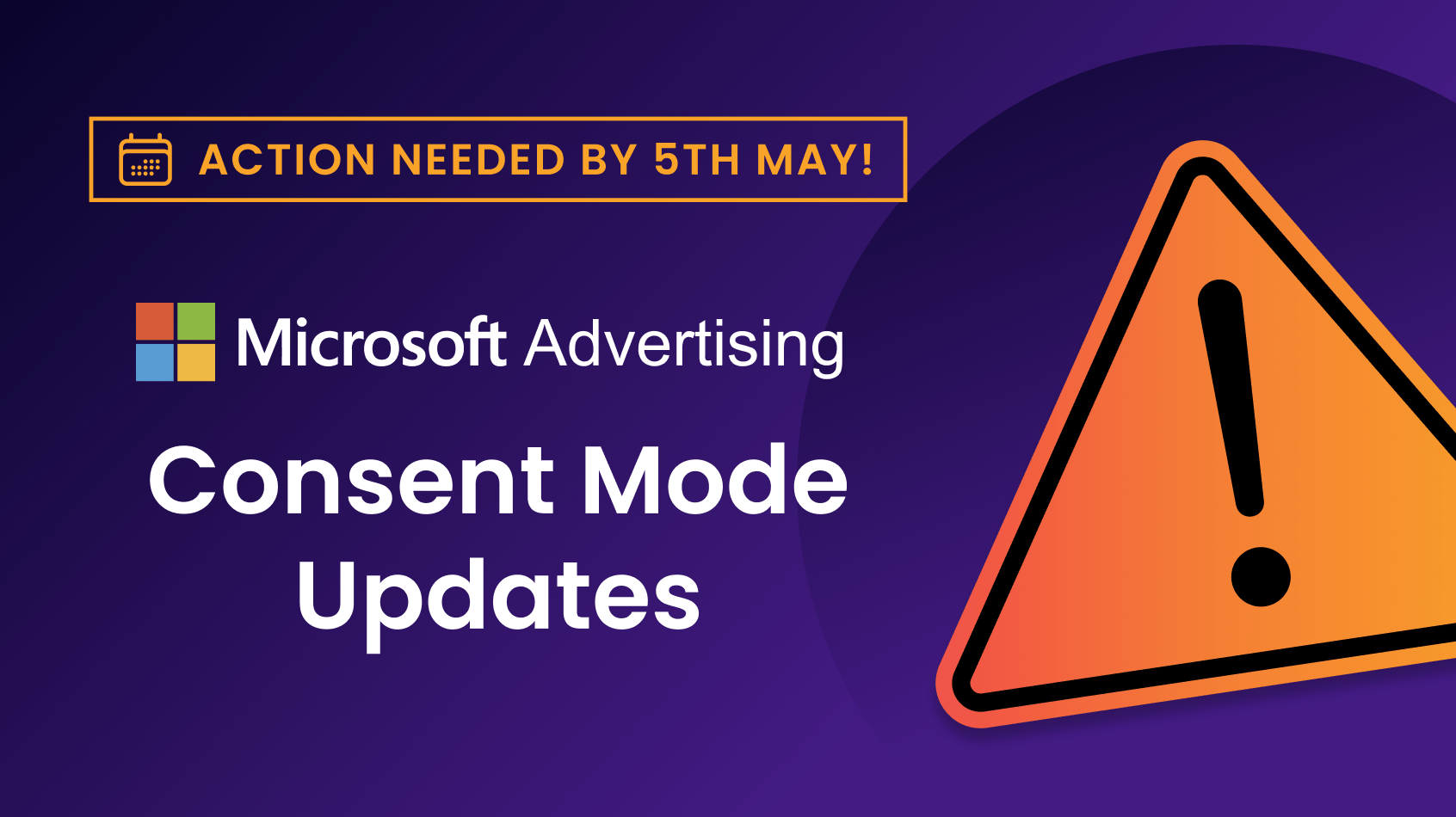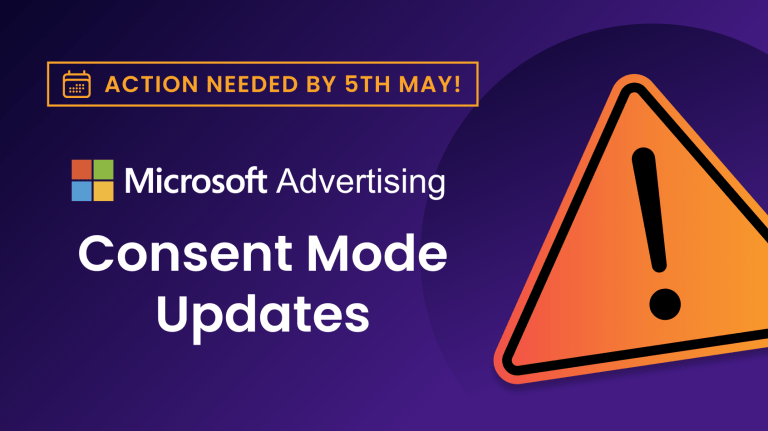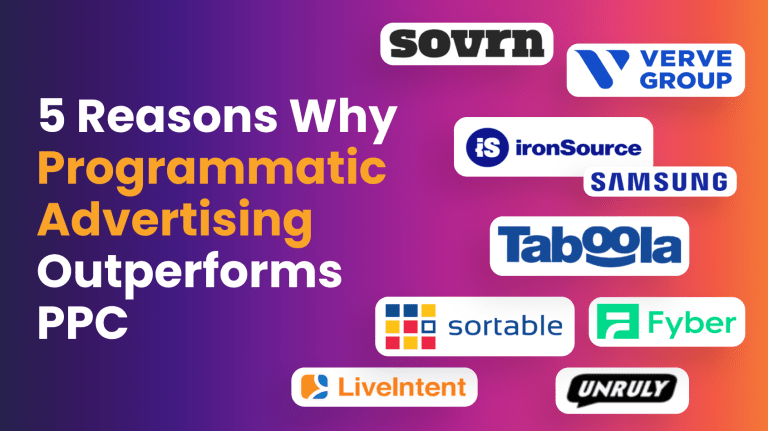As the digital landscape continues to evolve, so too does the need for greater transparency, and compliance with data privacy regulations. In response to these growing demands, Microsoft Advertising is rolling out significant updates to its Universal Event Tracking (UET) Consent Mode. If you’re an advertiser with end-users located within the European Economic Area (EEA), Switzerland, or the UK, these changes will impact how you track conversions and optimize your campaigns. Here’s everything you need to know to stay compliant before the 5th of May deadline and maintain your campaign performance.
What is Microsoft Advertising UET Consent Mode?
First introduced in 2020, Consent Mode was designed to help advertisers ensure their tracking activities align with GDPR and other digital data policies. It communicates a user’s cookie consent status to tracking systems, allowing only the compliant data to be collected and used.
With the launch of Consent Mode V2 in late 2023, Microsoft Advertising is enhancing its focus on end-user consent, particularly in response to the Digital Markets Act. Blocking of conversion data is done depending on user location, therefore only data from users in markets where we have started to enforce the need for a consent signal, will be blocked.
From May the 5th, advertisers will need to ensure they’re meeting these updated consent requirements, or risk losing critical tracking and reporting functionality.
Why Does This Matter?
Failure to provide the necessary consent signals to Microsoft through your UET configuration could have serious consequences for your advertising efforts. Without these signals:
- Conversions may not be tracked: This means you won’t have accurate data on how well your campaigns are performing.
- Campaign optimization could suffer: Features that rely on conversion data, such as bid strategies and Performance Max campaigns, will be less effective.
- Audience segments won’t be created: This can hinder your ability to target specific groups of users, leading to a less efficient ad spend.
The bottom line? Without addressing these changes, you may face long-term challenges in campaign performance and data accuracy.
What Should You Do Next?
To ensure compliance and maintain the effectiveness of your campaigns, you’ll need to make some adjustments to your UET tag.
Here are three ways to do this (only one of them should be implemented):
1) By adjusting your UET cookie access based on consent status.
You’ll need to add code to every page on your website to set your default consent setting, and add a separate code to update the setting once the user has provided or denied consent.
Default setting snippet:
Update consent settings snippet:
For more information, visit the UET help page.
2) Through the Transparency & Consent Framework (TCF) for UET (only if you have one in place).
Microsoft integrated with IAB TCF v2.0 so consent signals can be passed directly or via a Consent Management Platform (CMP). This solution requires the following code snippet to be added above your UET tag:
For more information, visit the UET help page.
3) Through third party management tools like Google Tag manager (GTM).
Microsoft’s UET template now supports Google Tag Manager Consent Mode. Google’s Consent Management Platform (CMP) partner program integrates with most CMPs.
This integration allows Microsoft to retrieve the consent state directly from GTM, in the case where you are using both GTM and one of the supported Consent Management Platforms (CMPs).
For more information, visit the GTM consent mode help page.
How does consent mode work on Microsoft?
Consent mode will be used via a new setting for UET called ‘ad_storage’. Depending on the user’s consent choice, the following scenarios will occur.
If ad_storage = ‘granted’ (Default)
• Cookies pertaining to advertising may be read and written in the 1st party (advertiser domain) or 3rd party context (bing.com).
If ad_storage=’denied’
• Write or read 1st party cookies (advertiser domain) – No ads cookies are written or read by UET when the user is on that advertiser website.
• Write 3rd party cookies (bing.com domain) – No ads cookies are written by UET when the user is on that advertiser website.
• Read 3rd party cookies (bing.com domain) – Microsoft 3rd party cookies are not read for advertising purposes. Microsoft 3rd party cookies are read for fraud and spam purposes only.
How to verify consent is being passed correctly to the UET tag
You can use the UET Tag Helper extension to validate setups and ensure compliance. When you run the Tag Helper on your website, it will surface the consent state “asc” parameter (below), which will show as “G” or “Granted” if consent is granted.
Another way to verify consent is being passed into the UET is by reviewing the conversions in the UI and checking conversion data is still being tracked.
What are the expected impacts on client performance once consent mode is successfully implemented?
After clients successfully integrate a consent signal with UET, conversion data will be tracked once again. However, it’s important to note that the total volume of conversions reported is likely to decrease. This reduction occurs because only conversions from users who have explicitly given consent will be tracked.
Users who either deny consent or do not interact with the consent banner will no longer be tracked and therefore won’t appear as reported conversions. Despite this, the change is necessary in order to comply with privacy regulations and respect user preferences. It’s important to keep this in mind when evaluating performance.
Modeled Conversions and how they can help bridge the gap in reporting
Conversion modeling can help fill the gap in these scenarios, when it’s not possible to observe the path between ad interactions and conversions. Modeled Conversions use advanced modeling techniques to analyze observable data and historical trends, quantifying the relationship between consented and unconsented users. Then, using observable user journeys where users have consented to cookie usage, Microsoft’s models will assess attribution paths for the unconsented journeys. This provides a more complete and accurate view of your conversion and revenue reporting — all while respecting user consent choices.
Where can I view Modeled Conversions and how do I interpret the data?
Reporting for Modeled Conversions will be in general availability starting on March the 5th in the following markets: France, Germany and the Netherlands. It will be activated by default to all eligible campaigns targeting these markets.
Microsoft will then progressively expand the rollout to other markets in the European Economic Area, the UK and Switzerland – providing more updates for these markets closer to the release date.
Conclusion
These upcoming changes to Microsoft Advertising Consent Mode are crucial for ensuring your campaigns remain compliant and effective in a rapidly changing digital environment. By taking the necessary steps to update your UET configuration, you can avoid data loss, maintain accurate reporting, and continue optimizing your campaigns for success.
With the deadline now fast approaching its imperative you action this change as soon as possible—review your current setup, implement the necessary changes, and ensure your campaigns are ready!



